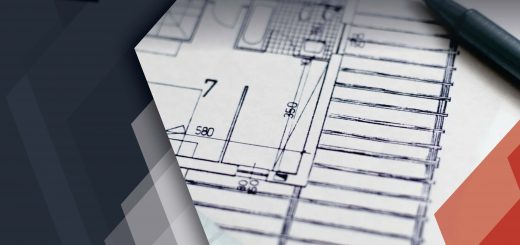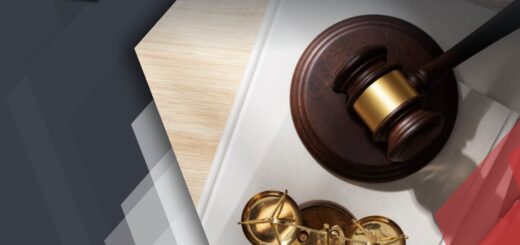Smart Coatings Find Relevance in Aerospace Industry – An Intellectual Property Perspective
With the advancements in material science, researchers and scholars keep ringing the changes in the way the term “Smart Coatings” is defined. It would be wise to keep one simple definition which is universally accepted, i.e., the next generation coatings which dynamically react to their environment.
The technology has already penetrated various industry sectors such as aerospace, marine, automotive, construction, communication, textile, biomedical, electronics, power and energy and defence weaponry.
In the aerospace industry, patenting activity has increased at an average growth rate of 9.5% per year. The patent filings show that the technology has attracted the Chinese scientific community (nearly 40% of patents filed in China) followed by the USA and then Japan. In China, the patents are mainly filed by universities/research institutes and independent inventors. IP filings show that patenting activity has increased in this technology domain at a great pace with an average growth rate of approx. 24% per year. The grant rate in China is also significant as compared to other countries. Major universities and research institutes in China that are filing patents in this technology domain are:
- Beihang University of Aeronautics & Astronautics
- Jilin University.
- Southeast University Nanjing
- Nanjing University of Aeronautics & Astronautics (NUAA)
- Zhengzhou Institute Aeronautical Industry Management
- Shanghai Jiao Tong University
- Harbin Institute of Technology
- Lanzhou Institute Physics Chinese Academy of Space Technology
- Zhejiang University
- University Nanjing Aeronautics & Astronautics
In the aerospace sector, industries/organizations adopting this rapidly growing technology are collaborating and strategizing to enter and establish in fast-growing aerospace markets like India. Pexa, established in 2010, a global supplier of surface coatings, paints and treatments for aerospace industry extends its partnership to Aerospace & Defense manufacturing companies in India. Pexa is also marketing the Socomore’s surface treatment products in India.
Overall, key industry players in this technology domain are:
- Airbus;
- Boeing;
- PPG Industries;
- Rolls Royce;
- General Electric;
- European Aeronautic Defence & Space Company (EADS);
- Saint Gobain Glass;
- Mitsubishi Heavy Industries; and
- AVIC.
The patent and non-patent literature in this technology domain reveal that various types of coating materials have been categorized under smart coatings. These include, but is not limited to:
- Anticorrosion coatings
- Colour-shifting coatings
- Bioactive
coatings such as:
- Antimicrobial/antifungal coatings
- Antifouling coatings
- Bio decontamination coatings
- Biocatalytic coatings
- Self-stratifying/assembling coatings
- Electrically conducting coatings
- Super insulating coatings
- Self-repair/self-healing coatings
- Super-hydrophobic coatings
- Self-lubricating coatings
- Optically active coatings
- Self-cleaning coatings
- Self-dimming coatings
- Electrochromic coatings
- Thermochromic coatings
- Super hydrophilic coatings
- Omni phobic coatings
- Piezoelectric coatings
- Photovoltaic coatings
- Piezo-magnetic coatings
All in all, patenting activity shows that these patents generally focus on coating materials for aerospace parts and components like aircraft structural body parts, compressor and/or turbine blades/airfoils/discs, valves, heat exchangers etc. In most cases, superhydrophobic coatings for aircraft (particularly, fixed-wing aircraft) skin, airfoils, structural members like wings, stabilizers etc. and satellite antennas are disclosed. The remaining patents focus highly on aircraft parts which are subjected to harsh environments (high temperatures and pressures) resulting in corrosion and wear due to due to oxidation, hot corrosion and/or sulphidation.
Before the year 2000, the major focus of the inventions lies in using hydrophobic coatings for various aircraft parts and/or components such as engine surface, wing, stabilizer systems and aircraft window glass and coatings capable of withstanding severe conditions due to high temperature and pressure for structural parts for next-generation supersonic aircraft, engine parts and gas turbines. Although limited, researchers also focus on satellite parts/components. Few notable patent disclosures during this period are:
- Design and development of black paint for coating on spacecraft element, such as a deployable antenna. The coating has a low surface resistivity to dissipate electrical charges that develop on the external surface of the spacecraft, and this surface resistivity is maintained (with relatively minor, acceptable changes) over extended periods of time. Along with this, the paint exhibits excellent mechanical properties, including a high degree of flexibility that makes it suitable for use on structures that flex, bend, or deploy during service thereby preventing it from cracks and flakes due to mechanical or thermal strains.
- To prevent thermal degradation of aircraft structures such as leading edges and engine exhaust nozzles that are exposed to a high-speed environment resulting in heat generation which further causes thermal erosion, the plurality of micro-capsules is designed that contains heat absorbing material.
- As silica is covered with a hydrophobic compound in water repellant coatings, the hydrophobic fine particles are likely to peel off from the surface. To overcome this problem, a coating film having excellent durability and ultra-high-water repellence is prepared.
- Self-lubricating coatings are useful in aircraft fuel and oil pump housings, where severe operating conditions can occur.
- Bayer has filed four patents during this period disclosing the use of the ultrasonic surface as a friction-reducing coating for the hulls of the aircraft. Along with this, the coating also has self-cleaning properties.
- For producing a coating with ultraphobic properties, a substantially smooth substrate surface is coated with nickel hydroxide [Ni(OH)2] particles of diameter 0.5 to 20 μm. The substrate is then provided with a hydrophobic or oleophobic coating.
- Production of an ultra hydrophobic surface of aluminium as substrate material.
- Production of an ultra hydrophobic surface on tungsten carbide as substrate material. The ultraphobic material is deposited onto the tungsten carbide after its laser ablation.
- Sand blasting method for depositing the ultra-phobic coatings is disclosed.
- High-temperature oxidation-resistant coating that can withstand the aerodynamic heating environment at the time a spacecraft re-entry into the earth’s atmosphere. This coating also performs a self-repairing function by self-repairing the cracks under the heated environment and has low catalytic properties.
Between the years 2000-2010, the focus of patent literatures lies in fixed-wing aircraft. Most of these patents disclose electrically conductive, hydrophobic and self-cleaning for aircraft structural parts. Other patent literatures have a significant focus on designing and development of anti-corrosion and self-lubricating coatings for components designed for use in a hostile thermal environment, such as turbine, combustor and augmenter components of a gas turbine engine. Notable patent literatures are:
- Coating for aircraft de-icing that not only have other potential applications in aerospace such as coatings for a helicopter rotor blade, service system of an aircraft, etc. but also can be used for submarine periscope head window to remove fouling for enhanced optical features.
- Self-cleaning super hydrophobic coating for aircraft structures (in particular, structures made of titanium) that are susceptible to ice, water and other contaminant buildup.
- A hard, wear-resistant and ice-phobic coating of an airfoil surface to enhance the deicing properties deposited via low-pressure plasma vapor deposition technologies such as plasma enhanced chemical vapor deposition (PECVD), chemical vapor deposition (CVD), physical vapor deposition (PVD or “sputtering”), and/or reactive sputtering. The coating includes a functional top layer which is harder than the airfoil surface and has a high contact angle with water.
- Electrically conductive coating for aircraft windows comprising polymeric film of polycarbonate, acrylic, polypropylene and/or PET and filler material such as metallic oxide, preferably ATO (antimony tin oxide).
Between 2005-2010, although researchers mainly focus on super hydrophobic and electrically conducting coatings, but significant patents were filed on other smart coatings like anti-corrosion, self-cleaning, self-lubricating, electrochromic, hydrophilic and self-healing coatings for various aerospace parts and components. Few examples are:
- A variable emissivity and variable reflectivity electrochromic intelligent thermal control coating for spacecraft;
- Electrically conducting coating for electric and/or electronic systems typically, like the avionics or the distribution network of power of an aircraft;
- Self-lubricating bearing for use in aircraft;
- Super-hydrophilic inorganic coating with improved light transmittance;
- Coating material having corrosion-resisting, wear-resisting and self-lubricating properties;
- Nano super-hydrophobic surface coating used for airplane anti-freezing and deicing;
- Anti-corrosion and low friction coating;
- Shape-memory polymers, having self-healing properties suitable for making morphing skins for aircraft;
- Hydrophobic coatings having anti-corrosion and self-cleaning properties for the life support system for spacecraft and self-cleaning of external walls; and
- Coating having antifouling, antifogging and stain-resistant properties, preferably for airplane window.
We have already discussed that the meaning of the term “smart coatings” is dynamic in nature that keeps changing over time. The term “multifunctional” was integrated into its definition after the year 2010 because researchers started developing coatings that can perform two or more functions.
After 2010, significant patents disclose these multifunctional coatings and their preparation methods. Examples are:
- Anti-fog coating that has anti-reflection properties, self-cleaning properties, antiglare property and hydrophobic property for aircraft housing;
- Corrosion resistant coating having hydrophobic properties integrated into it;
- Super hydrophobic coating having self-cleaning properties that also provide protection against icing in an aircraft or protection against soiling and/or erosion in an aircraft;
- Thermal-insulating coating having anti-corrosion properties;
- Hydrophobic coatings having transparency and insulating properties; and
- Self-cleaning coating having antimicrobial properties used in aircraft cabins.
- Ice-phobic coating made by bonding hydrophobic entity to a hydrophilic moiety, in which the hydrophilic moiety can lower the freezing point of water.
Other patents literatures still focuses on aircraft and satellite structural parts such as windshields of airplane and spacecraft, airplane wings, landing gears, etc., gas turbine engine components, including but not limited to vanes, blades, blade outer air seals, fuel nozzle guides, combustor liners, exhaust liners, and augmenter liners using electrically conductive, hydrophobic, anti-corrosion, antimicrobial, self-healing, self-cleaning and corrosion-resistant coatings for improving their efficiency. It can also be seen that among the polymers Polyurethane resin is highly used in preparing various smart coatings.
Table of Contents
Looking ahead
In other industrial sectors, the smart coatings technology has not penetrated so well due to the economics involved with their development and eventual mass adoption, but market pull and patenting activity in the aerospace sector indicate a future for this technology. There are several key industry players in aerospace that are supplying “smart” or “semi-smart” coatings into the markets but there is a strict need for chemical firms really focusing on smart coatings. This can be achieved through investment in or acquisitions of innovative smaller firms that are specifically smart coatings focused or collaborating with research institutes and universities (especially, in countries like China where universities are supplying the bulk of inventions in this technology domain). Since, the definition of smart coatings is still expanding; researchers have an opportunity to reinforce the term “smart coatings” with different viewpoints on their performance.
– The Engineering and Editorial Team




